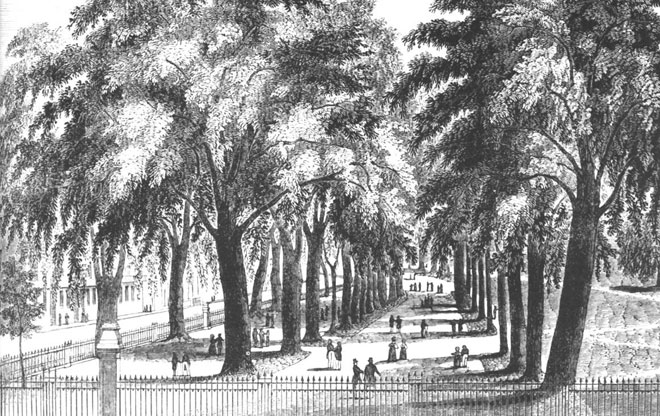
Elm trees on Tremont Street Mall, 1728
“Hear the echoes of 350 years of the most extraordinary history of America's oldest park. Here the Colonial militia mustered for the Revolution. In 1768, the hated British Redcoats began an eight-year encampment. George Washington, John Adams, and General Lafayette came here to celebrate our nation's independence." -- City of Boston
Image: Boston Public Library
Water Celebration, October 25, 1848
Image: New York Public Library 
Tremont St., 1913
Image: Margaret Dyson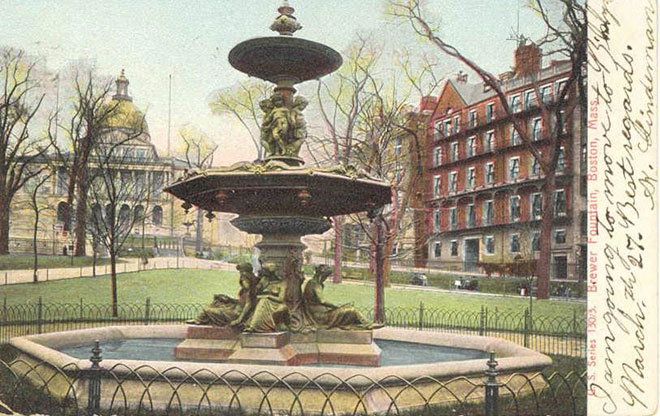
Brewer Fountain, 1870
Image: Margaret Dyson 
Aerial View of Boston Common
The 20th century saw major tree planting. The Brewer Fountain was moved and set on axis with the Bullfinch State House and Liberty Mall, a green vert, connecting them. The Soldiers and Sailors Monument, the Frog Pond, and the Parkman Bandstand were added.
Image: Google Maps 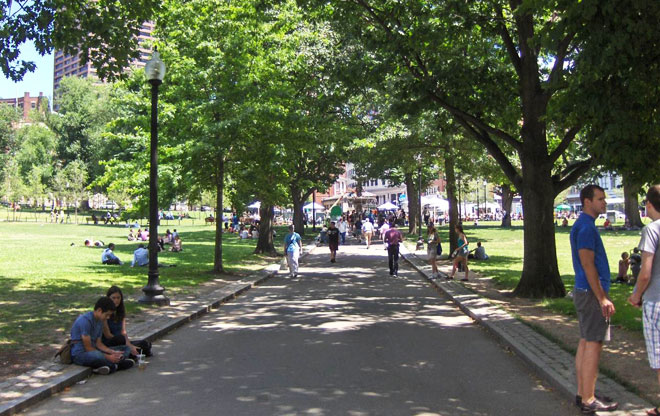
Walkway to Brewer Fountain Today
"Today, the historic Boston Common attracts hundreds of thousands of people every year, both residents and visitors. It is a place of sports, informal and organized; exhibitions; musical events; a Shakespeare festival; rallies and protests; charity walks and art shows; and on New Year’s Eve, Boston’s famous First Night. The Common remains and always will be the center stage of civic life, a place to play and to protest, and a green retreat in the heart of a busy city.” -- The Friends of the Public Garden.
Image: Marion Pressley 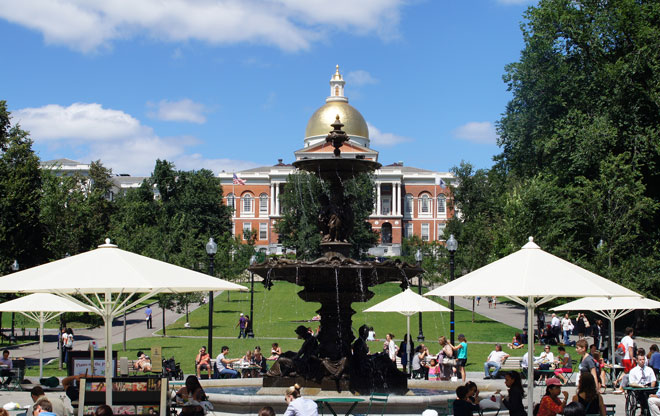
Brewer Fountain Plaza and Liberty Mall
The Common has remained a major civic space. There, Charles Lindbergh promoted commercial aviation, Martin Luther King, Jr. held rallies, protester railed against Vietnam War, and the Pope John Paul II held the first papal mass celebrated in North America.
Image: Marion Pressley 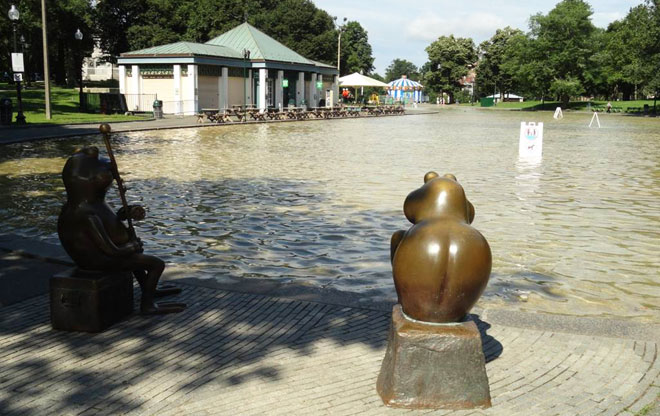
The Frong Pond
Image: Marion Pressley 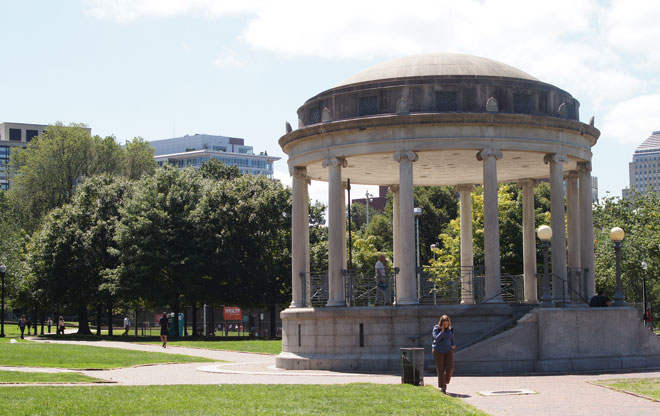
Parkman Bandstand
The bandstand was built in 1912 to honor George F. Parkman.
Image: Marion Pressley 
Memorial to the Union’s First Free Black Regiment
Image: Joan Hart / Arts Everyday Living 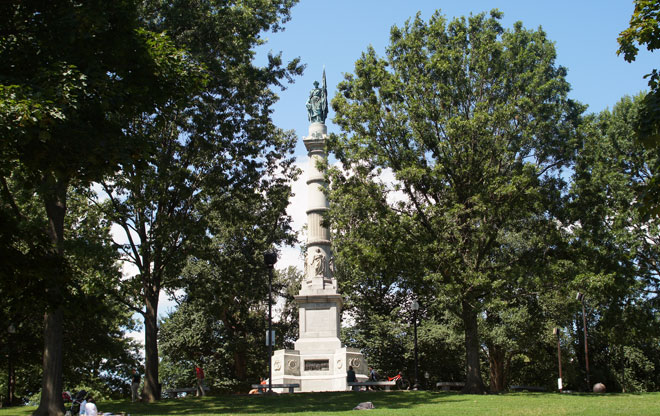
Soldier’s and Sailor’s Monument on Flagstaff Hill
Image: Marion Pressley